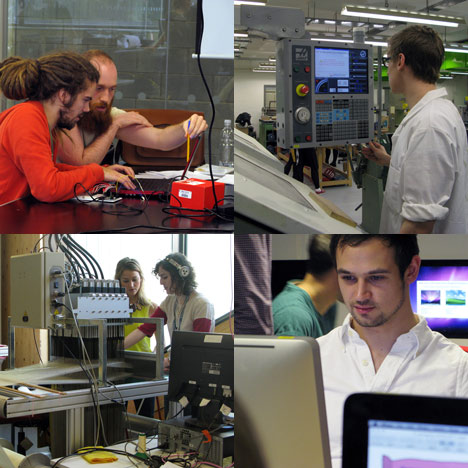
Technology and design: makingthe world around us
This first article in a series on technology and design supported by computing brand Intel takes us inside university workshops and studios to investigate how digital technology is radically transforming design education.
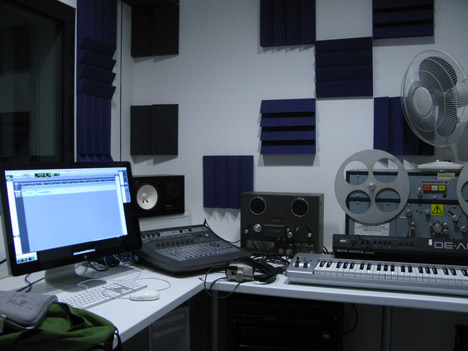
Above: editing suite at Central Saint Martins College of Art and Design
The current generation of architecture and design students is exposed to more technology than ever before. With an abundance of hardware and software available, today’s undergraduates face a tough challenge to identify and develop the digital skills that will enable them to stand out among a growing crowd of technically proficient graduates, while retaining a focus on established design values.
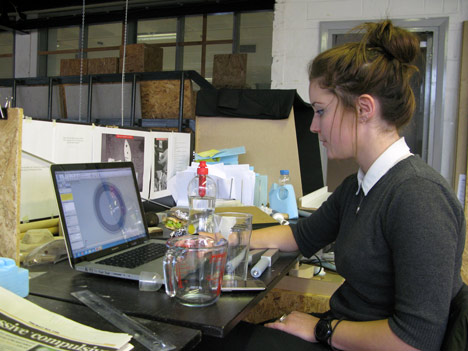
Above: product and furniture design studio at Kingston University's faculty of art, design and architecture
For those studying creative subjects, laptops and digital cameras have replaced pencils and sketchbooks as standard personal equipment, enabling students to work on and present projects anywhere. And schedules, tutorials and research material are all online, replacing the library and the notice board.
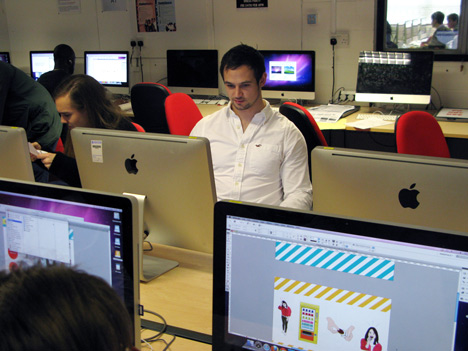
Above: computer lab at Kingston University's faculty of art, design and architecture
“Everything is mobile now,” says MA Industrial Design student Tom Maisey, talking in the computer lab at London college Central Saint Martins. “It’s hard to believe that I started my BA in 2005 without a computer or access to internet.” The lab is packed with students toiling away at crammed rows of Apple Macs.
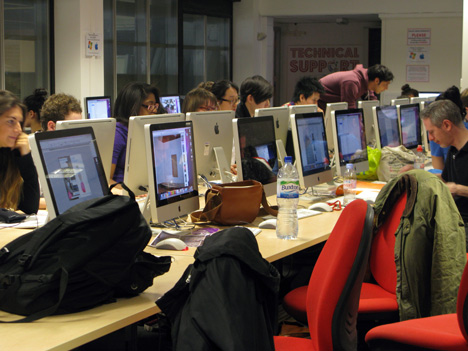
Above: computer lab at Kingston University's faculty of art, design and architecture
The open-plan studios at Central Saint Martins are still littered with the familiar creative chaos of sketches and models but now there are laptops and tablets everywhere. The school’s new £200 million campus at Kings Cross in central London also features communal areas with informal booths where students cluster round their screens.
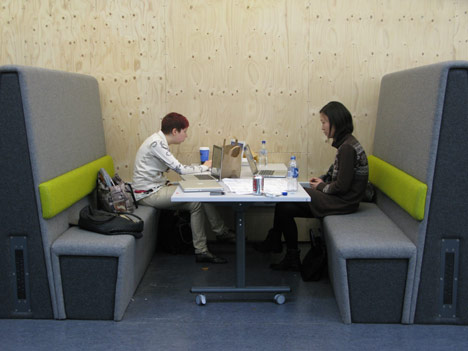
Above: flexible workspace at Central Saint Martins College of Art and Design
Access to the latest manufacturing and prototyping machinery is an important differentiator for many prospective students and the school has also invested in an advanced computer centre with cutting-edge facilities for teaching physical computing science, robotics and sensor-based interactive electronics. The absence of noise is striking: compared to the loud, dusty, messy workshops of just a few years ago these spaces are serene, clean and quiet.
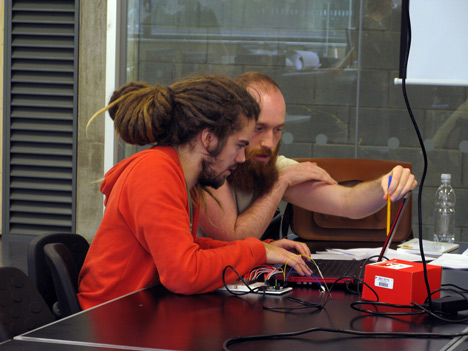
Above: physical computing lab at Central Saint Martins College of Art and Design
Digitally operated “time reduction” tools such as three dimensional scanners and printers, computer numerically controlled (CNC) milling and laser cutting machines are particularly popular and are becoming more accessible as the costs of buying and running the machines decreases. If used correctly, time reduction technologies can greatly benefit a student’s learning experience and project outcomes, enabling them to design and make forms that would be impossible to produce in any other way.
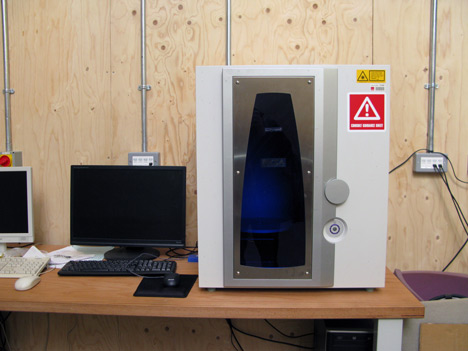
Above: 3D scanner at Central Saint Martins College of Art and Design
However, developing models and prototypes using this technology requires an understanding of the structural properties of materials and how to programme the machinery correctly. “One of the misconceptions about technology is that it’s magic and that you can come in to the workshop and look at a machine and it will make something for you,” explains Johnny Wilkinson, Technical Coordinator for the 3D workshops at Central Saint Martins.
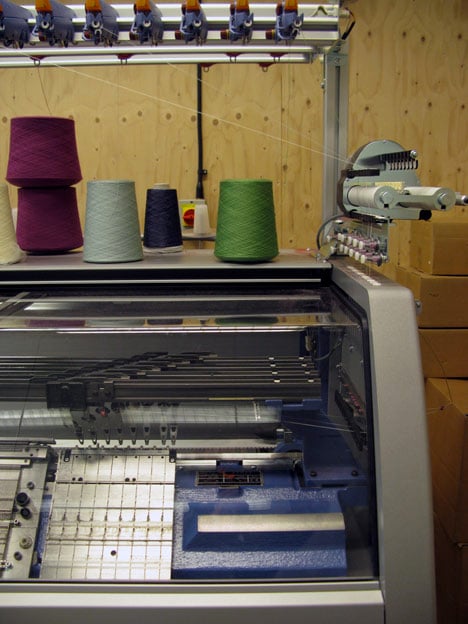
Above: computer-controlled knitting machine at Central Saint Martins College of Art and Design
It’s also easy to get carried away. In making cutting-edge technology available to students, there is a danger that they can be seduced by what it is capable of and want to use it for unnecessary or inappropriate tasks, explains Simon Maidment, acting head of the design school at Kingston University: “We've all seen rubbish projects being made using rapid prototyping. Just because someone knows how to use that technology doesn't make for a good project; you still need to have a strong idea.”
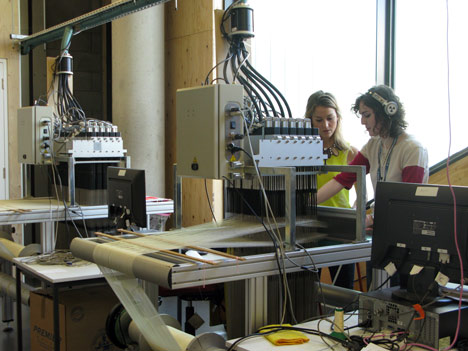
Above: digital weaving at Central Saint Martins College of Art and Design
Maidment encourages students to design by experimentation and the transition between workshop and studio space here is less clearly defined. Meanwhile the high-tech end of the workshop stands almost empty as students throng around more traditional machinery.
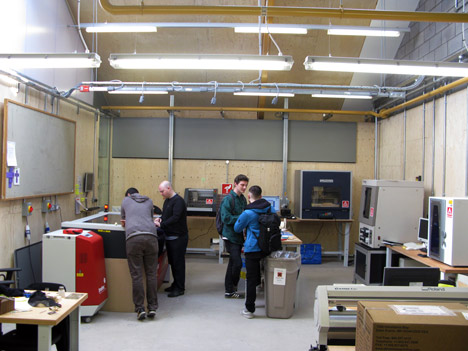
Above: 3D workshop at Central Saint Martins College of Art and Design
Lisa Bengtsson, a third year student on Kingston’s product and furniture design course, agrees that prototyping technology should be treated as just part of the creative process and recognises that having access to information and news on the latest technology-led trends can distract students from following their own path. “The computer needs to be used more as a tool than a solution to every problem. It’s important not to be limited by what you've seen being done before and to concentrate instead on understanding what the possibilities could be.”
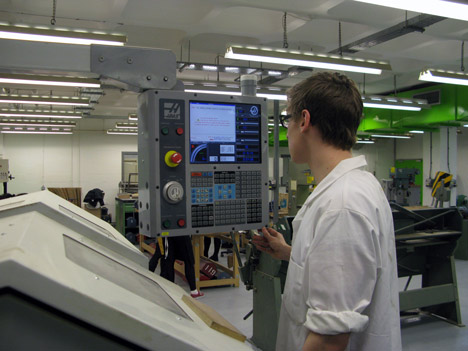
Above: student operating CNC lathe at Kingston University's faculty of art, design and architecture
Increasingly diverse and constantly evolving technologies are forcing teaching staff to decide what machinery to invest in and what software and technical skills are most valuable for their students. “The balance between the number of technologies that are available to students and the amount of time available to teach them has shifted dramatically in recent years,” claims Maidment, adding that there is a hierarchy of deliverables in the curriculum that means some potentially interesting and relevant topics are being left out.
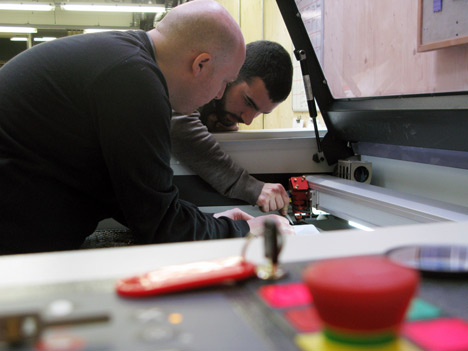
Above: 3D workshop at Central Saint Martins College of Art and Design
Reflecting the breadth of technologies that need to be covered by contemporary architecture and design courses, teaching methods are shifting away from the traditional format of lectures and tutorials towards a system of introductory workshops backed up by practical tuition. Recent Kingston graduate Ben Fursdon says this approach allows students to identify and explore new uses for the technologies. “Learning by doing is key. You gain a better understanding of how things work once you see it happen, especially with something you've designed yourself.”
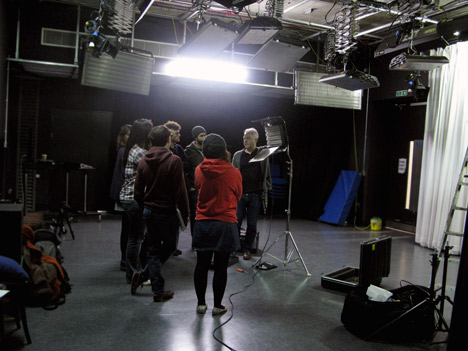
Above: film studio at Central Saint Martins College of Art and Design
Demonstrating an understanding of current technologies and computer software is seen by most students as key to an attractive portfolio. “Practices expect graduates to have a solid knowledge of 2D and 3D programs,” says Mike Begent, a graduate from London Metropolitan University’s Part II architecture course. “Being able to use those presentation tools is important but you also need to show strong conceptual skills if you don’t want to end up in an office doing one type of thing on a computer day after day.”
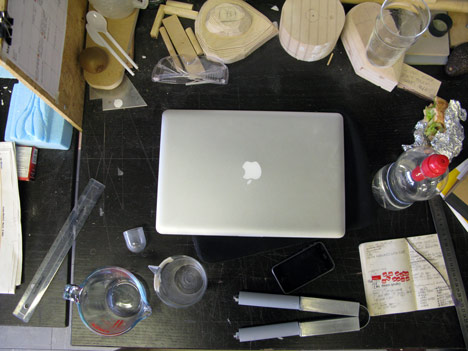
Above: student's workplace at Kingston University's faculty of art, design and architecture
With time reduction machinery and advanced software becoming more accessible to architecture and design students, the focus within education must remain on maintaining standards of creative thinking, with technology acting as a medium through which to generate and realise exceptional ideas, rather than as a replacement for traditional skills.
  |
How does this report compare with your experiences at college? Is emerging technology a help or hindrance to design education? Let us know your thoughts in the comments section below, on Facebook or by tweeting with #IntelAlwaysOn. |
Here's a selection of reactions from Twitter:
@27stars
Is technology replacing the sketchbook?
kris panova @krisp2992
@Dezeen Helps saving time, makes us lose manual skills #intelalwayson
vincent v d broecke @blancoarchitect
@27stars @dezeen: Replacement as such is a loss. Technology should be an enrichment & facilitate the "boring" work... sketching = feeling.
Greg Austin @greg_austin
@Dezeen @krisp2992 and so exemplifies the increase of business & management and loss of industry in Britain. #intelalwayson
Wilson Torres @WT312
@Dezeen #IntelAlwaysOn digi tech is strictly an enabler in design education. It should never replace pencil 2 paper ideation.
nayab shoukat @nayab19
@Dezeen design 2day is incomplete without both technology & sketch. Technology creates body & sketch adds heart to design #intelalwayson
“@CClerkenwell: Wondering if students on digital weaving machines still learn about fibre properties, how to set up a loom" #intelalwayson
“@krisp2992: technology should never replace a sketchbook, which is an artist best way to annotate any ideas in any place.” #intelalwayson
“@JeroenGerits: @Dezeen @krisp2992 Well… actually a pen and textbook is also technology.” #intelalwayson
“@DoodleHome: I wove on traditional looms for years there is a meditative property in setting up a loom I wouldn't change it” #intelalwayson
Creative Clerkenwell @CClerkenwell
Doing the manual setup/version helps you understand what can/can't should/shouldn't be done digitally. #intelalwayson @Dezeen @doodlehome
Barry Tottle @Teapot_Barry
@Dezeen @krisp2992 #intelalwayson agree. The process should always be thought, sketchbook, technology.
@IntegreatPlus: "misconception is technology is magic, it will make something for you” #intelalwayson
@BenStott: A 3D printer is not 'magic' it's only ever as good as what you put in. @Dezeen http://www.dezeen.com/2012/04/17/technology-and-design-making-the-world-around-us/ #intelalwayson